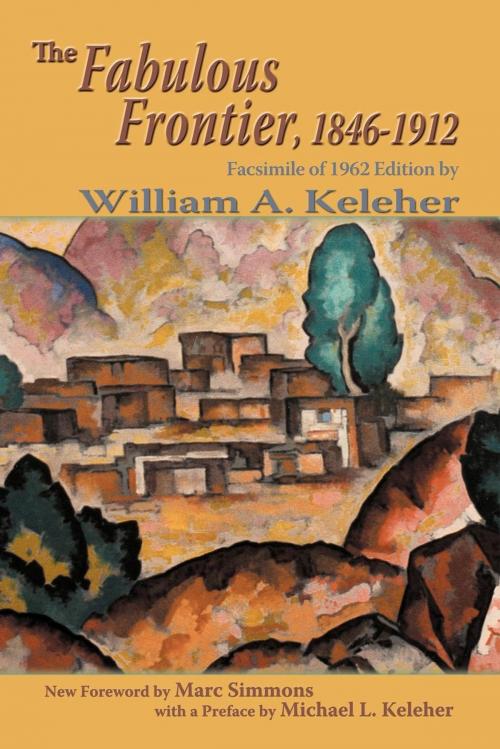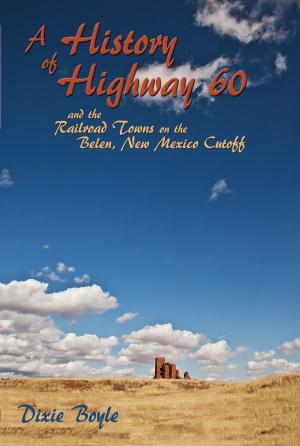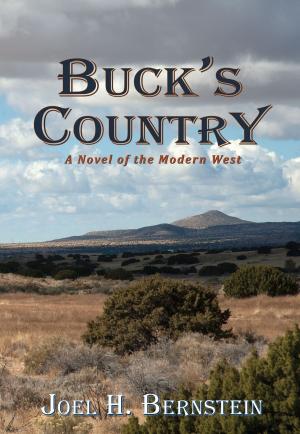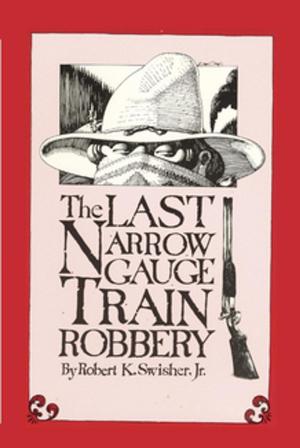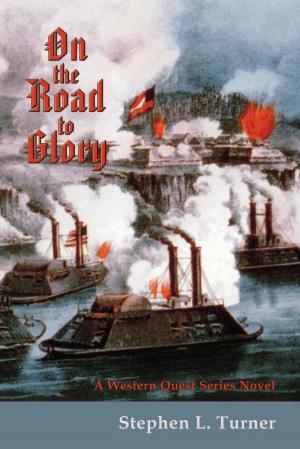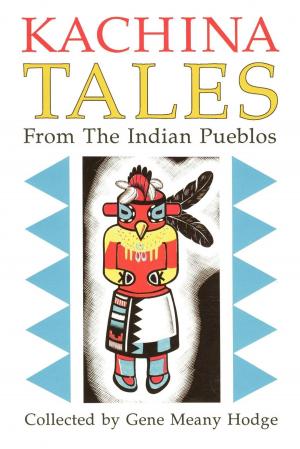The Fabulous Frontier, 1846-1912
Facsimile of 1962 Edition
Nonfiction, History, Americas, United States, State & Local| Author: | William A. Keleher | ISBN: | 9781611391954 |
| Publisher: | Sunstone Press | Publication: | March 15, 2008 |
| Imprint: | Sunstone Press | Language: | English |
| Author: | William A. Keleher |
| ISBN: | 9781611391954 |
| Publisher: | Sunstone Press |
| Publication: | March 15, 2008 |
| Imprint: | Sunstone Press |
| Language: | English |
Recapturing the atmosphere of Territorial days, this 1962 extensively annotated edition of a Southwestern classic focuses on southeastern New Mexico, where "murder was a common offense" and stagecoach robberies were "nothing to get excited about." The delineation of this last, lively frontier begins in 1846 and ends in 1912 with New Mexico statehood. Here are the deeds, lives and legends of the colorful men who figure in New Mexico history. The lucky ones: John J. Baxter who struck it rich at White Oaks, Tom Wilson and Uncle Jack Winters of the Homestake claim, Jack Martin who brought water to the Jornada del Muerto and started the desperate struggle among stockmen culminating in the Lincoln County War, and the cattle king John S. Chisum. The land grabbers: Charles B. Eddy, accused of acquiring a county through coercion; the Denman gang dedicated to frightening settlers from their hereditary holdings; and Tom Catron, political boss and land-office man who owned more than a county. Writing men: Washington Matthews, Territorial army surgeon who told about the Navajo; Hubert Bancroft, prolific historian; Adolph Bandelier, pioneer anthropologist; Charles Lummis, the journalist who publicized life in the Territory through travel books; and Lew Wallace, Territorial governor who wrote “Ben Hur.” The frontier newsmen: "Ash" Upson, chronicler of Billy the Kid; Major Bill Caffrey of White Oaks' “Lincoln County Leader”; Emerson Hough who mined his Western experiences for many a yarn; and Eugene Manlove Rhodes, beloved cowboy of the big circulation magazines. New appraisal is given Albert B. Fall, who with Doheny, another old timer, figured in the Teapot Dome affair. Not neglected are such celebrated frontiersmen as Patrick Garrett, nemesis of Billy the Kid, and Albert J. Fountain, who, with his little son, a buckboard and high-stepping team, disappeared from the face of the earth. All these and many more live again in accurate eye-witness accounts that make this a prime source book on the old West. WILLIAM A. KELEHER (1886–1972) observed first hand the changing circumstances of people and places of New Mexico. Born in Lawrence, Kansas, he arrived in Albuquerque two years later, with his parents and two older brothers. The older brothers died of diphtheria within a few weeks of their arrival. As an adult, Keleher worked for more than four years as a Morse operator, and later as a reporter on New Mexico newspapers. Bidding a reluctant farewell to newspaper work, Keleher studied law at Washington & Lee University and started practicing law in 1915. He was recognized as a successful attorney, being honored by the New Mexico State Bar as one of the outstanding Attorneys of the Twentieth Century. One quickly observes from his writings, and writings about him, that he lived a fruitful and exemplary life. He is also the author of “Turmoil in New Mexico,” “Violence in Lincoln County,” “Maxwell Land Grant,” and “Memoirs,” all from Sunstone Press.
Recapturing the atmosphere of Territorial days, this 1962 extensively annotated edition of a Southwestern classic focuses on southeastern New Mexico, where "murder was a common offense" and stagecoach robberies were "nothing to get excited about." The delineation of this last, lively frontier begins in 1846 and ends in 1912 with New Mexico statehood. Here are the deeds, lives and legends of the colorful men who figure in New Mexico history. The lucky ones: John J. Baxter who struck it rich at White Oaks, Tom Wilson and Uncle Jack Winters of the Homestake claim, Jack Martin who brought water to the Jornada del Muerto and started the desperate struggle among stockmen culminating in the Lincoln County War, and the cattle king John S. Chisum. The land grabbers: Charles B. Eddy, accused of acquiring a county through coercion; the Denman gang dedicated to frightening settlers from their hereditary holdings; and Tom Catron, political boss and land-office man who owned more than a county. Writing men: Washington Matthews, Territorial army surgeon who told about the Navajo; Hubert Bancroft, prolific historian; Adolph Bandelier, pioneer anthropologist; Charles Lummis, the journalist who publicized life in the Territory through travel books; and Lew Wallace, Territorial governor who wrote “Ben Hur.” The frontier newsmen: "Ash" Upson, chronicler of Billy the Kid; Major Bill Caffrey of White Oaks' “Lincoln County Leader”; Emerson Hough who mined his Western experiences for many a yarn; and Eugene Manlove Rhodes, beloved cowboy of the big circulation magazines. New appraisal is given Albert B. Fall, who with Doheny, another old timer, figured in the Teapot Dome affair. Not neglected are such celebrated frontiersmen as Patrick Garrett, nemesis of Billy the Kid, and Albert J. Fountain, who, with his little son, a buckboard and high-stepping team, disappeared from the face of the earth. All these and many more live again in accurate eye-witness accounts that make this a prime source book on the old West. WILLIAM A. KELEHER (1886–1972) observed first hand the changing circumstances of people and places of New Mexico. Born in Lawrence, Kansas, he arrived in Albuquerque two years later, with his parents and two older brothers. The older brothers died of diphtheria within a few weeks of their arrival. As an adult, Keleher worked for more than four years as a Morse operator, and later as a reporter on New Mexico newspapers. Bidding a reluctant farewell to newspaper work, Keleher studied law at Washington & Lee University and started practicing law in 1915. He was recognized as a successful attorney, being honored by the New Mexico State Bar as one of the outstanding Attorneys of the Twentieth Century. One quickly observes from his writings, and writings about him, that he lived a fruitful and exemplary life. He is also the author of “Turmoil in New Mexico,” “Violence in Lincoln County,” “Maxwell Land Grant,” and “Memoirs,” all from Sunstone Press.
